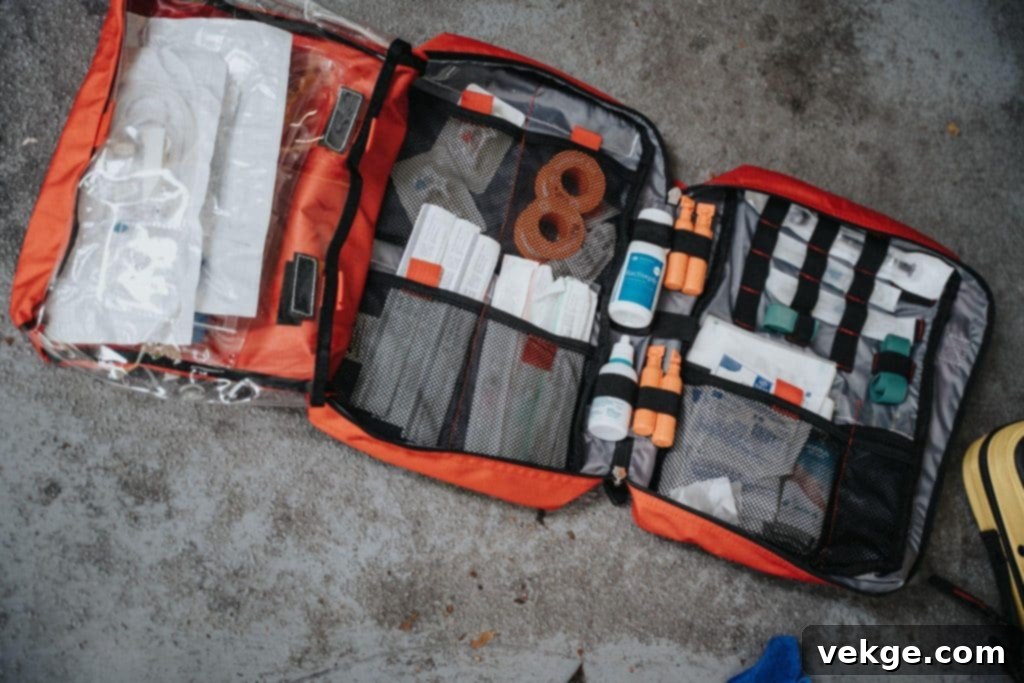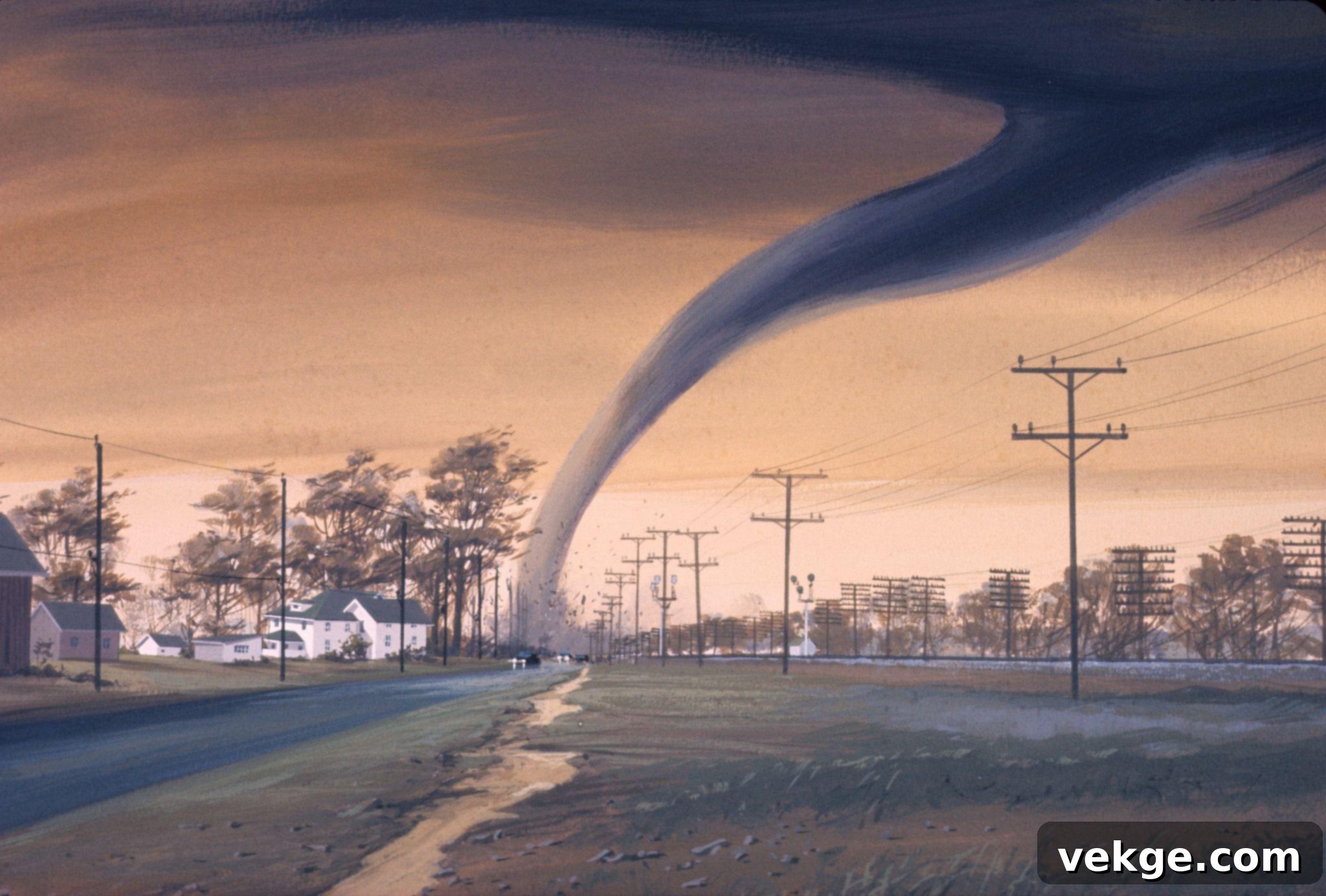Mastering Extreme Weather Preparedness: A Comprehensive Guide for Home and Garden Resilience
In an era where extreme weather events are becoming increasingly common and severe, proactive planning and preparation are no longer optional—they are essential. Whether you’re bracing for a scorching heatwave, an unprecedented snowstorm, a devastating hurricane, or a torrential downpour, the impact on your home, garden, and family can be profound. However, with the right strategies, these impacts can be significantly mitigated, ensuring safety and minimizing potential damage. This comprehensive guide will walk you through every critical step, from understanding local risks to fortifying your property and building community resilience, transforming your approach to extreme weather challenges.
Understanding Weather Patterns and Risks
The foundation of effective preparedness lies in a deep understanding of the specific weather risks inherent to your geographic location. This crucial knowledge enables you to tailor your preparation efforts to the most probable and impactful scenarios. For instance, homeowners residing in coastal regions must prioritize robust hurricane and flood preparedness, while those in the Midwest might focus on tornado safety, including reinforced shelters and early warning systems. Beyond immediate weather, considering long-term climate trends is also vital. Consult both local weather services, which provide real-time forecasts and alerts, and historical data, which can offer invaluable insights into recurring weather hazards and their potential severity. Understanding your area’s climate history, including average temperatures, rainfall, and historical extreme events, empowers you to make informed decisions for long-term resilience.
Furthermore, familiarize yourself with different types of weather phenomena: heatwaves, droughts, blizzards, ice storms, severe thunderstorms, wildfires, and tsunamis. Each requires a unique set of precautions. Knowing the specific vulnerabilities of your property, whether it’s proximity to a floodplain, dense forest, or an exposed coastline, allows for highly targeted protective measures. Staying informed through reliable sources like the National Weather Service, local news, and community alert systems is paramount for timely preparation and response.
Insurance Considerations for Extreme Weather

While preventative measures are crucial, a critical aspect of preparing for extreme weather involves understanding and managing your insurance coverage. Proper insurance acts as a financial safety net when disaster strikes, ensuring you can rebuild and recover. Here’s a detailed guide for homeowners navigating insurance options to ensure adequate protection for those just-in-case situations:
Homeowners Insurance
Standard homeowner’s insurance policies typically cover a range of natural disasters, including damage from windstorms, hail, lightning, and sometimes even snow and ice. However, it is absolutely essential to meticulously review your policy to understand what perils are explicitly covered and, more importantly, what is excluded. As Alex Coffman, Co-Founder of Teifke Real Estate, wisely notes, “Certain extreme weather events, like floods and earthquakes, are often not included in standard policies and require additional, specialized coverage.” Don’t assume; always verify with your insurer.
Flood Insurance
If your property is located in a flood-prone area, or even if it’s just adjacent to one, purchasing flood insurance is not just recommended, it’s crucial. This coverage is almost universally excluded from standard homeowner’s policies and must be obtained separately, often through government-backed programs like the National Flood Insurance Program (NFIP). Even if you’re not in a designated flood zone, unexpected heavy rainfall can cause significant damage, making flood insurance a wise investment for many homeowners.
Hurricane Insurance
For homes in regions frequently impacted by hurricanes, standard policies might not sufficiently cover wind damage, which is a primary concern during these powerful storms. It is vital to consider adding hurricane insurance or a specific windstorm endorsement to your policy. This specialized coverage can protect against damages caused by hurricane-force winds, a particularly relevant consideration for coastal regions and a critical component in mitigating potentially catastrophic financial losses after a hurricane.
Deductibles and Limits
Understanding the deductibles and coverage limits on your policies is paramount. While higher deductibles can result in lower monthly premiums, they also mean a larger out-of-pocket expense when you need to file a claim. You must strike a balance that aligns with your financial comfort level. Furthermore, ensure that the coverage limits for your dwelling, personal property, and loss of use are sufficient to completely rebuild your home to current building codes and replace all your belongings in the event of a total loss. Underinsurance can lead to severe financial strain.
Documentation and Inventory
Before a disaster strikes, maintain a detailed and up-to-date inventory of your home’s contents. This should include photographs or videos of each room, valuable items, and receipts for major purchases. Document the condition of your home’s exterior and interior. This comprehensive documentation can be invaluable in speeding up the claims process, preventing disputes, and ensuring you receive fair compensation for your losses.
Policy Review and Updates
Insurance coverage is not a set-it-and-forget-it affair. As your personal situation changes—whether through major home improvements, the acquisition of new assets, or significant life events—your insurance coverage should evolve with it. Regularly review your policy, ideally annually, with your insurance agent to ensure that your coverage accurately meets your current needs and adequately protects your most valuable asset.
Understanding Exclusions and Endorsements
Be acutely aware of specific exclusions within your policy. Many standard policies, for example, do not cover damage from events like mudslides, sinkholes, or sewer backups. For unique risks prevalent in your area, consider adding endorsements (additional coverage) to your policy. For instance, if you live in an area prone to mudslides, you might need a separate endorsement, as this is often excluded from standard policies and even flood insurance. Consulting with a qualified insurance professional is highly recommended to understand the best options for your specific situation and tailor coverage that provides true peace of mind.
Beyond these, also inquire about “Loss of Use” coverage, which pays for additional living expenses if your home becomes uninhabitable, and “Ordinance or Law” coverage, which covers the increased cost of repairs due to updated building codes after a disaster.
Fortifying Your Home: Building a Resilient Structure
The physical resilience of your home is your first line of defense against extreme weather. Investing in structural reinforcements and protective measures can significantly reduce damage and ensure safety.
Windows and Doors
These are often the most vulnerable points of entry for wind, water, and flying debris. Reinforce them by installing storm shutters, which can be deployed quickly, or investing in impact-resistant windows. Beyond protecting against debris, these upgrades also significantly improve your home’s insulation, making it more energy-efficient and comfortable during extreme temperatures, whether hot or cold. Ensure all exterior doors have strong, secure locking mechanisms and that garage doors, especially, are reinforced against high winds.
Roof and Gutters
Your roof is your home’s primary shield. Regularly inspect your roof for damaged or missing shingles, loose flashing, or any signs of wear and tear. Address these issues promptly. Ensure gutters and downspouts are clear of debris and properly diverting water away from your foundation to prevent water damage during heavy rains and potential ice dams in winter. For added protection, especially in hurricane or heavy snowfall zones, consider installing a water-resistant barrier under your roof covering, or upgrading to more robust, wind-resistant roofing materials like metal or reinforced asphalt shingles.
Foundations and Basements
If you’re in a flood-prone area or have a basement, proactive waterproofing is critical. Consider sealing basements and foundations with waterproof paints or sealants, and ensure exterior grading slopes away from the house to direct water runoff. Installing a sump pump with a battery backup and backflow valves can effectively prevent water intrusion and sewer backups, protecting your home’s lower levels from devastating water damage. Regularly test your sump pump to ensure it’s in working order.
Heating and Cooling Systems
Reliable heating and cooling are essential for comfort and safety during extreme temperatures. Ensure your HVAC systems are well-maintained with regular professional check-ups. In areas prone to heatwaves, proper insulation in walls, attics, and crawl spaces, along with adequate ventilation, can significantly help keep your home cool without over-relying on energy-intensive air conditioning. During cold snaps, ensure your furnace is serviced and consider alternative heating sources like a wood stove or a generator for power outages, always ensuring proper ventilation to prevent carbon monoxide poisoning.
Landscaping and Garden Protection: Nature’s Defense and Beauty
Your garden isn’t just about aesthetics; thoughtful landscaping can play a crucial role in protecting your home from extreme weather events.
Tree Trimming
Regularly trim trees and shrubs, especially those close to your home or power lines. Remove dead or weak branches that could fall and cause damage during storms. Healthy, well-maintained trees are not only safer but also more resilient. Consider consulting a professional Arborist in Fort Worth (or your local area) to assess the health and stability of larger trees on your property.
Soil and Drainage
Improve soil drainage to prevent erosion, waterlogging, and foundation issues during heavy rains. Techniques like creating raised garden beds, ensuring proper grading around your home, and incorporating drought-resistant plants can significantly help in managing both flood and drought conditions. Many households are switching to artificial grass in their gardens precisely because it remains unaffected by heavy rain, scorching heat, or frigid temperatures, offering a low-maintenance, resilient solution.
Windbreaks
Strategically planting wind-resistant trees and shrubs can serve as a natural barrier against strong winds, protecting both your home and garden from the damaging force of gales and storms. These living windbreaks also offer benefits like improved energy efficiency for your home and habitat for local wildlife.
Protecting Plants
For sensitive plants, especially during extreme heat or cold, consider using protective covers, burlap wraps, or moving potted plants indoors. Mulching around the base of plants can help regulate soil temperature, retain moisture during droughts, and provide insulation during freezes, making your garden more resilient to temperature fluctuations.
Garden Furniture
When outfitting your outdoor living spaces, prioritize buying the right kind of garden table and chair sets that are explicitly designed to withstand harsh weather conditions. Opt for durable materials like aluminum, treated wood, or all-weather wicker. During severe weather warnings, secure or store lighter furniture, decorative items, and anything that could become a projectile to prevent damage or injury.
Emergency Preparedness: Ready for Anything

Having an immediate response plan and resources is critical for protecting your family during an extreme weather event.
Emergency Kit
Assemble a comprehensive emergency kit with essential supplies that can sustain your household for at least 72 hours, preferably longer. This should include: at least one gallon of water per person per day, non-perishable food (and a manual can opener), flashlights with extra batteries, a hand-crank or battery-powered radio, a first aid kit, essential medications, a whistle to signal for help, dust masks, moist towelettes, garbage bags and plastic ties for personal sanitation, a wrench or pliers to turn off utilities, a cell phone with chargers and a backup battery, and important family documents in a waterproof container. Tailor this kit to your specific weather risks and family needs, including supplies for infants, elderly family members, and pets.
Communication Plan
Develop a family communication plan in case of separation during a weather emergency or power outages that disrupt cell service. Ensure everyone knows the plan, including designated out-of-state contacts (who may have better service), meeting points outside your home, and a secondary meeting point outside your neighborhood. Practice the plan regularly and ensure all family members know where emergency supplies are located.
Evacuation Planning
For certain extreme weather events, evacuation might be necessary. Know your local evacuation routes and have a “go-bag” ready with essentials like important documents, medications, cash, and a change of clothes. Practice your evacuation route and have a plan for pets. Stay informed about local emergency broadcasts and heed all evacuation orders promptly.
Power Outage Preparation
Extreme weather often leads to power outages. Prepare by having alternative light sources, backup power solutions (such as a generator, ensuring it’s used safely outdoors), and a plan for keeping food cold or cooking without electricity. Consider charging all portable electronic devices in advance and keeping a car charger handy.
Energy Efficiency and Sustainability: A Greener, Safer Home
Integrating sustainable practices not only benefits the environment but also enhances your home’s resilience to extreme weather.
Renewable Energy Sources
Consider investing in renewable energy sources, such as rooftop solar panels paired with battery storage. These systems can provide a reliable backup power source during grid outages caused by extreme weather, significantly reducing your reliance on traditional utilities and increasing your home’s energy independence. Furthermore, energy-efficient appliances and smart home technologies can help manage consumption and optimize energy use.
Water Conservation
In drought-prone areas or during prolonged dry spells, effective water conservation is paramount. Set up rain barrels to collect rainwater for garden use, implement a drip irrigation system to deliver water directly to plant roots, and choose drought-resistant native plants for your landscaping. Consider greywater recycling systems for non-potable uses. These measures conserve precious resources and reduce vulnerability during water shortages.
Community Collaboration: Strength in Numbers
Individual preparedness is vital, but a resilient community provides an even stronger safety net.
Neighborhood Networks
Establishing a neighborhood network or community watch program can be invaluable during and after extreme weather events. Sharing resources, information, and skills (like first aid or technical knowledge) can make a significant difference in community resilience and recovery efforts. Organize meetings to discuss potential hazards and develop a collective response plan.
Local Resources and Assistance
Stay informed about local resources, such as emergency shelters, designated evacuation routes, and assistance programs offered by government agencies or non-profit organizations. Participate in community preparedness activities, workshops, and volunteer opportunities to build a robust support network and contribute to collective safety.
Regular Maintenance and Updates: An Ongoing Commitment
Preparedness is an evolving process, not a static state. Regular attention ensures your home and plans remain ready.
Inspections
Conduct regular, thorough inspections of your home and property for potential vulnerabilities. Look for issues like cracks in walls, signs of a leaking roof, aging infrastructure, or deteriorating foundational elements. Addressing these issues proactively, before they escalate into significant problems during extreme weather, can save considerable time, money, and stress.
Upgrades
As technology and building codes advance, consider upgrading to more weather-resistant materials and modern technologies that improve the resilience and safety of your home and garden. This might include impact-resistant siding, energy-efficient windows, smart leak detectors, or advanced roofing systems. These upgrades are investments in your property’s long-term protection and value.
An Ongoing Process: Your Commitment to Resilience
Preparing your home and garden for extreme weather is not a one-time task but an ongoing, dynamic process that requires continuous attention, review, and adaptation. As climate patterns shift and your property evolves, so too should your preparedness strategy. By taking proactive steps today, from understanding your specific risks and securing adequate insurance to fortifying your home, developing emergency plans, embracing sustainable practices, and engaging with your community, you can ensure that your home, garden, and family are ready to withstand whatever nature throws your way, fostering a profound sense of safety and resilience.
